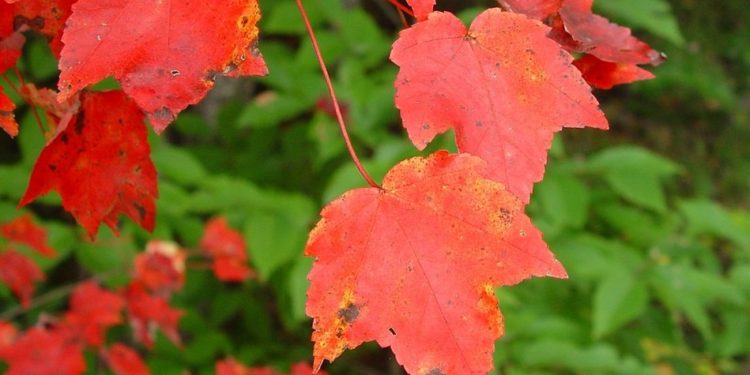
Citizen Scientists contribute to continental scale study to assess variation in nitrogen use of red maple (Acer rubrum)
By: Steve Gougherty*
* PhD Student, Finzi Lab, Department of Biology, Boston University
Nitrogen dynamics in plants
In terrestrial ecosystems, plant growth is commonly limited by the availability of nitrogen. Nitrogen is a critical element for plant health as it is incorporated into key molecular structures such as chlorophyll, which absorbs light energy during photosynthesis, and enzymes (e.g., RuBisCo, which is responsible for fixing carbon dioxide from the atmosphere as part of photosynthesis). Many plants start life with a nitrogen reserve in their seeds, but eventually come to rely on their root system to absorb nitrogen from the soil to satisfy their demand.
Acquiring nitrogen from soil can be a costly endeavor for plants, and perennial plants have developed strategies to more efficiently use the nitrogen they have already acquired. For example, deciduous trees effectively recycle nitrogen at the end of each growing season through a process known as foliar nitrogen resorption. Foliar nitrogen resorption involves the breakdown of nitrogen containing compounds (like chlorophyll and enzymes) in the leaf and the transfer to other tissues in the plant, such as developing buds. In fact, the breakdown of chlorophyll in leaves and transfer to other plant tissues is partially responsible for the ‘fall colors’ in eastern temperate forests. Even though researchers know that foliar nutrient resorption is an important component of tree’s annual nitrogen budget, extremely little is known about how variable this process is throughout geographic ranges of plants. This is an important question because understanding the nature of nitrogen limitation on plant productivity is an active area for ecologists studying energy and carbon balances of ecosystems.
Citizen Scientist role in addressing questions about red maple nitrogen use

Red maple (Acer rubrum) is one of the most abundant and broadly distributed tree species in North America (Figure 1; green shading shows approximate distribution). Its abundance and broad distribution makes it an excellent candidate to assess the potential for variation in key nutrient retention strategies, such as foliar nitrogen resorption. However, sampling red maple throughout its geographic range is a major logistical challenge for an individual researcher. As a result, I started a Citizen Science project that invites participants to sample red maple leaves in their local areas and send them to a research laboratory for processing and analysis. A broad network of Citizen Scientists is ideal for this project for several reasons: 1. Citizen Scientists know where to find red maple trees in their local areas. 2. The network allows for the potential to obtain samples from nearly the entire geographic distribution of red maple in the United States. 3. Since Citizen Scientists sample locally, it makes the two sampling time points (once when leaves are green, and once at leaf fall) feasible.
2019 was the initial year of the project and over 120 Citizen Scientists signed up to participate in the project (Figure 1; magenta dots). As leader of this project I am extremely grateful for the response we have received and look forward to disseminating our results to our Citizen Scientists and the scientific community over the course of the project. Participants interested in collecting in 2020 are welcome to sign up on our website at any time.
Getting involved in the project
Interested members of the Kentucky Native Plant Society and readers of The Lady Slipper are invited to learn more about the project at our website: sites.bu.edu/tasper . On our website we have more information about our research questions along with a signup form for participants, and sampling protocols.
